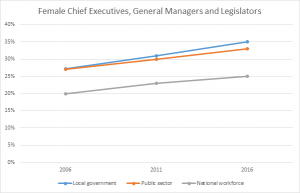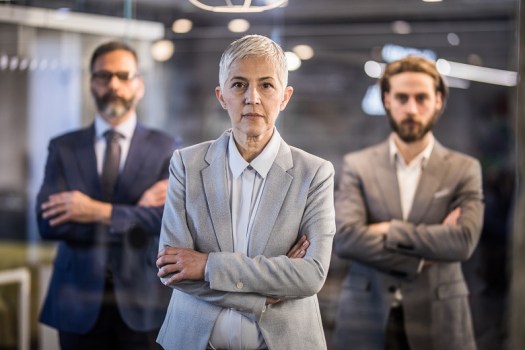
Local councils across Australia are set to become the first level of government to smash through the gender divide and reach equality in senior positions in less than ten years, according to a public policy expert.

Councils across Australia could have gender parity in senior ranks by 2026 following a year-on-year increase in female representation at senior levels, Alex Lawrie, a researcher at the Institute of Public Policy and Governance says.
It comes as the Coalition faces criticism for low levels of female representation in the party room following the exodus of a number of women from senior ranks, including former deputy leader Julie Bishop, frontbencher Kelly O’Dwyer and Liberal-turned independent Julia Banks.
But the level of government closest to the community – local government – is outrunning the state and federal government on gender parity in senior ranks, says Mr Lawrie, who told Government News that councils have seen an eight per cent jump in female senior managers in five years.
“We are now at a point where local government as an industry sector is starting to approach the gender boundary (of 40/60). They’re sitting at about 35 per cent at the moment and so if we see a similar eight per cent jump we think by 2021 councils will have broken through this gender boundary,” Mr Lawrie says.
The eight per cent jump from 2011, seen in 2016 census data, was substantially higher than the national workforce, which only had an increase of around two per cent, he said. It also represented a 20 per cent jump from five years earlier, the third highest of any industry, and outstripped the public sector more broadly.
Mr Lawrie says five years ago his team noted the presence in councils of a cohort of female middle managers with much higher levels of education than their male counterparts, who were very well positioned to rise to senior levels.

2021: councils to break through glass ceiling
It’s this generation of women who Mr Lawrie believes will continue to rise through local government ranks to tackle the gender divide head-on – and potentially see councils on track to hit gender equality from 2021.
“At the time we saw these female middle managers perfectly positioned to move through the ranks and smash that glass ceiling. Then what we saw in our 2016 profile was quite a large jump in the number of female general managers in local government – it went up eight per cent,” he says.
The Australian Public Service currently has a make-up of 45 per cent women in senior executive positions, while the NSW Government sits at 38 per cent, making councils potentially the first to be on track to gender parity at senior levels in less than two years.
Not only this, but local governments are tackling gender norms head on, with a substantial number of female executives in typically male dominated professions.
“We also saw some really interesting changes in particular occupations as well. In occupations where it’s perceived males dominate, particularly construction-type engineering roles, there were again large jumps in the proportion of females in management positions compared to the national workforce,” he says.
Councils must take the lead
Local governments are well-placed to tackle the gender divide, Mr Lawrie says, because of the fluid nature of their structure.
“Part of it has to do with the nature of local government … in that you do get exposure across a diversity of activities and services,” he said. “Whereas in the state or Commonwealth where things are split functionally into departments it’s more difficult to move around.”
To stay on track for gender parity, councils need to make sure they’re exposing women to senior positions across the organisation, Mr Lawrie says.
“The idea that merit is disproportionately concentrated across males doesn’t make a lot of sense. It’s about giving females the opportunities and exposure that males often get.
“I think local government as a workplace is really well positioned for that because you can move around the organisation. It’s about the government reflecting the makeup of the community and you need all perspectives at the table for that. One of those perspectives is a gender perspective.”
Comment below to have your say on this story.
If you have a news story or tip-off, get in touch at editorial@governmentnews.com.au.
Sign up to the Government News newsletter.


